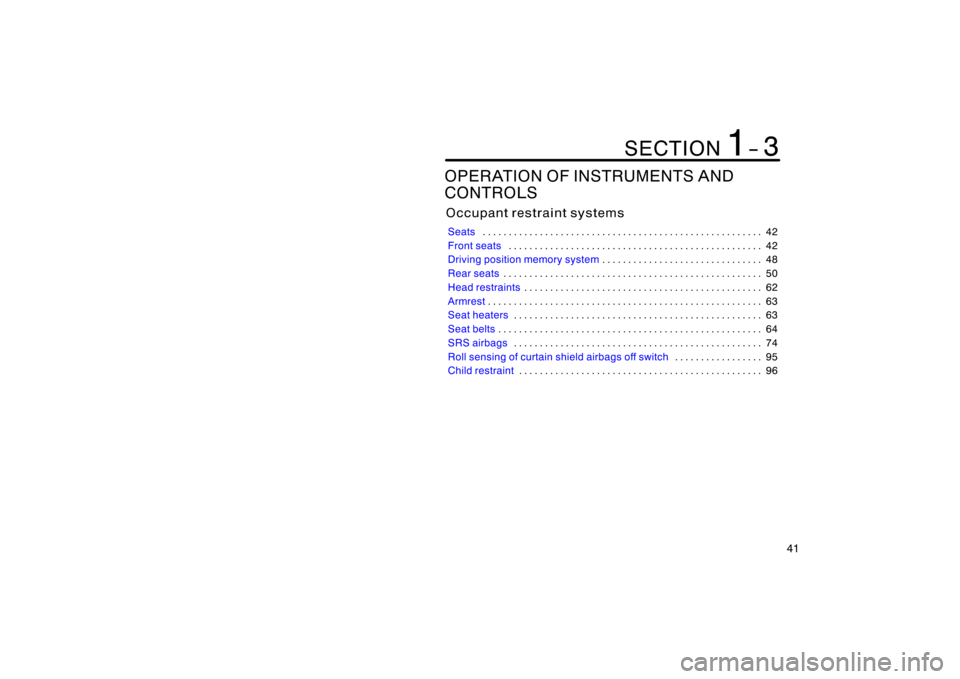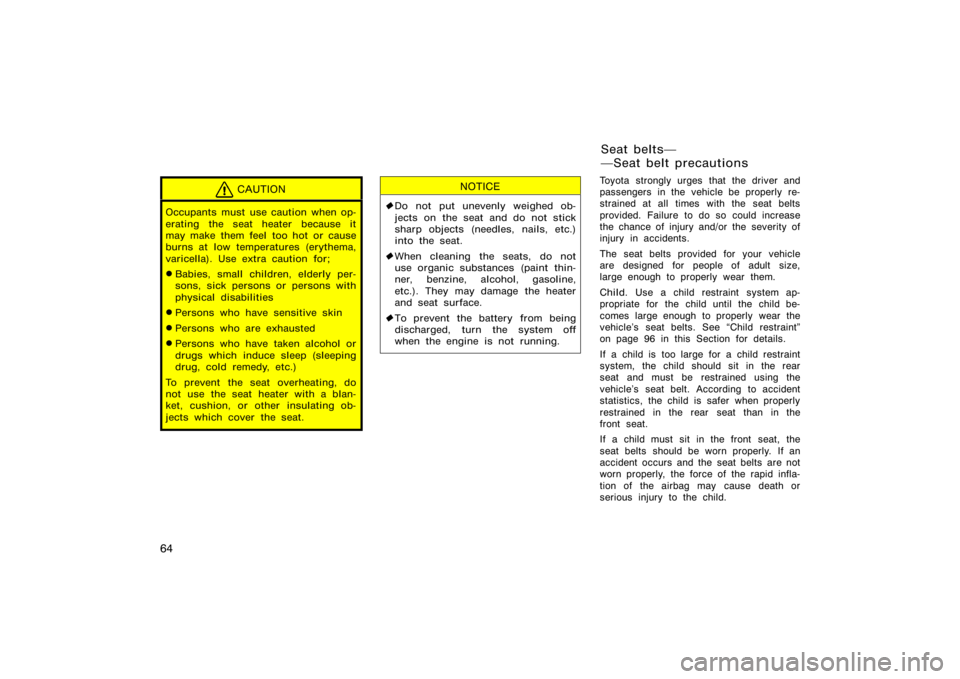Page 5 of 496
v
��SRS airbag deployment data
� �SRS airbag system diagnostic data
The information above is intended to be used for the
purpose of improving vehicle safety performance. Unlike
general data recorders, the EDR does not record sound
data such as conversation between passengers.
Toyota will not disclose the data recorded in an EDR to a
third party except when:
��An agreement from the vehicle’s owner (or the leas-
ing company for a leased vehicle) is obtained
� �Officially requested by the police or other authorities
� �Used as a defense for Toyota in a law suit
� �Ordered by the courtHowever, if necessary Toyota will:
��Use the data for research on Toyota vehicle safety
performance
� �Disclose the data to a third party for research pur-
poses without disclosing details of the vehicle
owner, and only when it is deemed necessary
� �Disclose summarized data cleared of vehicle identifi-
cation information to a non−Toyota organization for
research purposes
Page 9 of 496

ix
Scrapping of your Toyota
The SRS airbag and seat belt pretensioner devices in your
Toyota contain explosive chemicals. If the vehicle is
scrapped with the airbags and pretensioners left as they
are, it may cause an accident such as fire. Be sure to
have the systems of the SRS airbag and seat belt preten-
sioner removed and disposed of by a qualified service
shop or by your Toyota dealer before you dispose of your
vehicle.
On−pavement and off−roaddriving tips
This vehicle belongs to the ut ility vehicle class. Utility ve-
hicles have a significantly higher rollover rate than other
types of vehicles. This vehicle will handle and maneuver
differently from an ordinary passenger car because it is
designed for off−road use also. In addition, this vehicle
has a higher ground clearance and center of gravity than
that of an ordinary passenger car. This vehicle design fea-
ture causes this type of vehicle to be more likely to rol-
lover. Failure to operate this vehicle correctly may result in
loss of control, accidents or vehicle rollover causing death
or serious injury. Be sure to read �Off−road vehicle precau-
tions" on page 338 in Section 2 and �Off−road driving pre-
cautions" on page 374 in Section 3.
Page 10 of 496
x
Leak detection pump
This pump performs fuel evaporation leakage check. This
check is done approximately five hours after the engine is
turned off. So you may hear sound coming from under-
neath the luggage compartment for several minutes. It
does not indicate a malfunction.
Perchlorate Material
Special handling may apply,
See www.dtsc.ca.gov/hazardouswaste/perchlorate.
Your vehicle has components that may contain perchlorate.
These components may include airbag, seat belt preten-
sioners, and wireless remote control batteries.
Page 17 of 496
5
15. Engine switch
16. Cruise control switch
17. Hood lock release lever
18. Fuel filler door opener
19. Roll sensing of curtain shield airbags off switch
20. �VSC OFF" switch
21. Center differential lock switch
22. Power outlet main switch
23. Instrument panel light control dial
CY11065
1. Volume control switches for audio system/hands−free system (For the
hands−free system, see the separate
�Navigation System Owner ’s Manual".)
2. � ��" switch
3. �MODE" switch
4. Telephone switches (See the separate �Navigation System Owner ’s Manual".)
5. Speech command switch (See the separate �Navigation System Owner ’s
Manual".)
�
Steering switches
Page 20 of 496
8
or
Driver ’s seat belt reminder light∗1
Low engine oil pressure warning light∗1
Engine oil replacement reminder light∗1
(for vehicles sold in U.S.A.) Brake system warning light
∗ 1
Malfunction indicator lamp∗1
Charging system warning light∗1
Anti−lock brake system warning light∗1
SRS warning light∗1
Open door warning light∗1
Front passenger ’s seat belt reminder light∗1Automatic transmission fluid temperature
warning light∗1 (four−wheel drive models)
Tire pressure warning light∗1
Engine immobilizer/theft deterrent system
indicator light
Roll sensing of curtain shield airbags off
indicator light∗2
Low windshield washer fluid level warning
light∗1 (for vehicles sold in Canada)
Front passenger occupant classification indicator
light
Indicator symbols on the instrument panel
Page 22 of 496
10
∗1: For details, see �Service reminder indicators and warning
buzzers" on page 149 in Section 1−6.
∗2: For details, see �Roll sensing of curtain shield airbags off
switch" on page 95 in Section 1−3.
∗3: If this light flashes, see �Four−wheel drive system" on page
168 in Section 1−7.
∗4: If this light flashes, see �Rear height control air suspension"
on page 191 in Section 1−7.
∗5: If this light flashes, see �Cruise control" on page 203 in
Section 1−7.
Page 53 of 496

41
OPERATION OF INSTRUMENTS AND
CONTROLS
Occupant restraint systems
Seats42
. . . . . . . . . . . . . . . . . . . . . . . . . . . . . . . . . . . . .\
. . . . . . . . . . . . . . . . .
Front seats 42
. . . . . . . . . . . . . . . . . . . . . . . . . . . . . . . . . . . . \
. . . . . . . . . . . . .
Driving position memory system 48
. . . . . . . . . . . . . . . . . . . . . . . . . . . . . . .
Rear seats 50
. . . . . . . . . . . . . . . . . . . . . . . . . . . . . . . . . . . . \
. . . . . . . . . . . . . .
Head restraints 62
. . . . . . . . . . . . . . . . . . . . . . . . . . . . . . . . . . . . \
. . . . . . . . . .
Armrest 63
. . . . . . . . . . . . . . . . . . . . . . . . . . . . . . . . . . . . \
. . . . . . . . . . . . . . . . .
Seat heaters 63
. . . . . . . . . . . . . . . . . . . . . . . . . . . . . . . . . . . . \
. . . . . . . . . . . .
Seat belts 64
. . . . . . . . . . . . . . . . . . . . . . . . . . . . . . . . . . . . \
. . . . . . . . . . . . . . .
SRS airbags 74
. . . . . . . . . . . . . . . . . . . . . . . . . . . . . . . . . . . . \
. . . . . . . . . . . .
Roll sensing of curtain shield airbags off switch 95
. . . . . . . . . . . . . . . . .
Child restraint 96
. . . . . . . . . . . . . . . . . . . . . . . . . . . . . . . . . . . . \
. . . . . . . . . . .
SECTION 1− 3
Page 76 of 496

64
CAUTION
Occupants must use caution when op-
erating the seat heater because it
may make them feel too hot or cause
burns at low temperatures (erythema,
varicella). Use extra caution for;
�Babies, small children, elderly per-
sons, sick persons or persons with
physical disabilities
�Persons who have sensitive skin
�Persons who are exhausted
�Persons who have taken alcohol or
drugs which induce sleep (sleeping
drug, cold remedy, etc.)
To prevent the seat overheating, do
not use the seat heater with a blan-
ket, cushion, or other insulating ob-
jects which cover the seat.
NOTICE
� Do not put unevenly weighed ob-
jects on the seat and do not stick
sharp objects (needles, nails, etc.)
into the seat.
� When cleaning the seats, do not
use organic substances (paint thin-
ner, benzine, alcohol, gasoline,
etc.). They may damage the heater
and seat surface.
� To prevent the battery from being
discharged, turn the system off
when the engine is not running.
Toyota strongly urges that the driver and
passengers in the vehicle be properly re-
strained at all times with the seat belts
provided. Failure to do so could increase
the chance of injury and/or the severity of
injury in accidents.
The seat belts provided for your vehicle
are designed for people of adult size,
large enough to properly wear them.
Child. Use a child restraint system ap-
propriate for the child until the child be-
comes large enough to properly wear the
vehicle’s seat belts. See �Child restraint"
on page 96 in this Section for details.
If a child is too large for a child restraint
system, the child s hould sit in the rear
seat and must be restrained using the
vehicle’s seat belt. According to accident
statistics, the child is safer when properly
restrained in the rear seat than in the
front seat.
If a child must sit in the front seat, the
seat belts should be worn properly. If an
accident occurs and the seat belts are not
worn properly, the force of the rapid infla-
tion of the airbag may cause death or
serious injury to the child.
Seat belts�
�Seat belt precautions